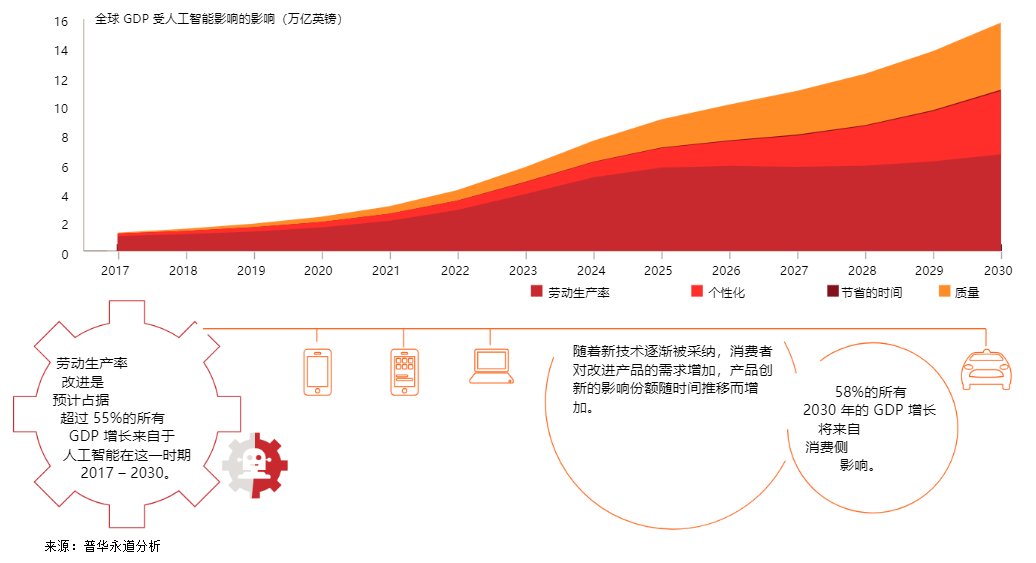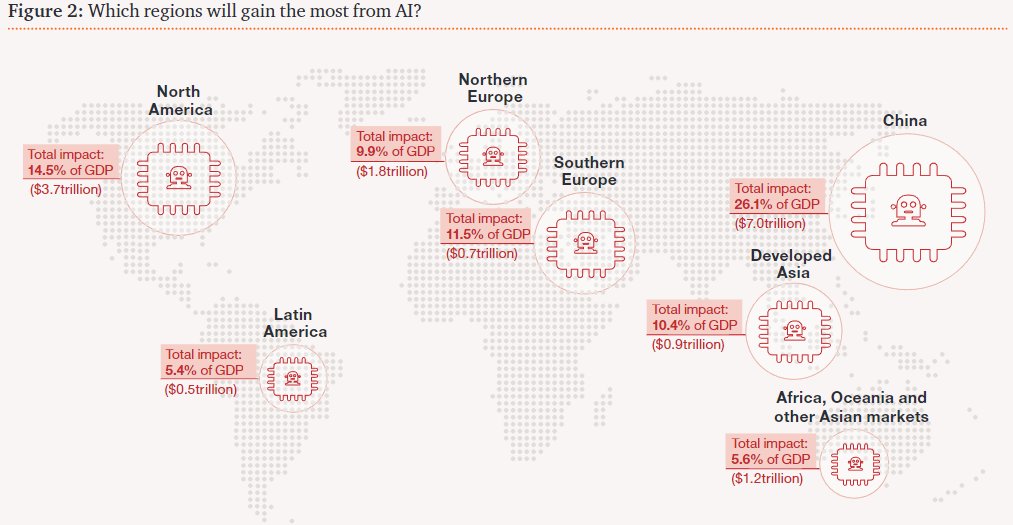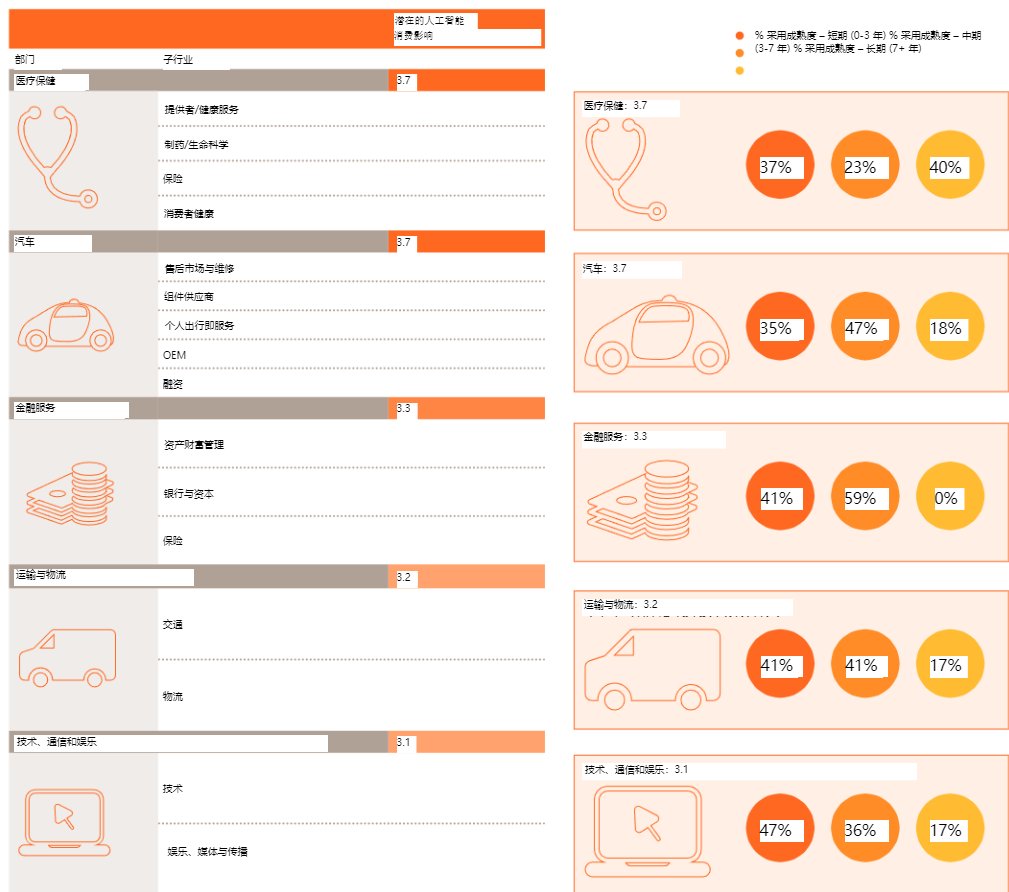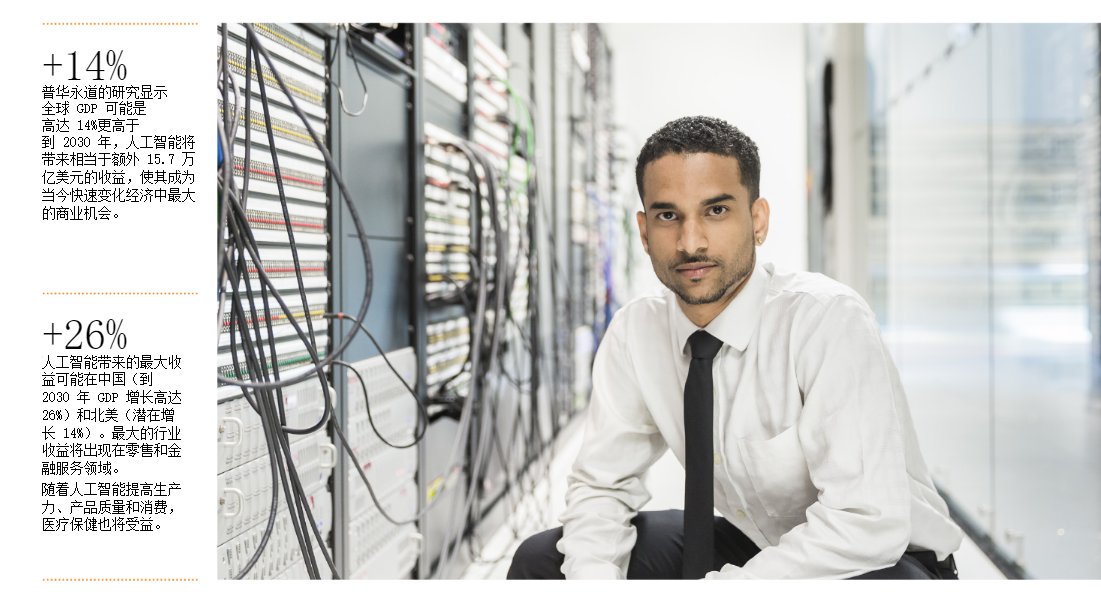Today I saw a report from PricewaterhouseCoopers, which predicts that by 2030, artificial intelligence will develop into a $15 trillion industry. It's very inspiring. Let's talk about the logic behind it:
In the first stage from 2023 to 2030, the core growth will come from the significant increase in labor productivity brought about by AI, with over 55% of global GDP growth coming from this stage. This stage belongs to product-side enhancement.
The second stage is after 2030, where 58% of global GDP growth will come from a widespread outbreak on the consumption side. The subsequent changes in consumer demand, behavior, and consumption driven by artificial intelligence will surpass the growth in productivity. PricewaterhouseCoopers predicts that by 2030, this will bring in over $9 trillion in additional GDP.
Just imagine, if you no longer need to drive to work and only need to work 20 hours a week, what could you do with the extra time?
More new consumer demand will emerge. The AI era will bring about personalized customization, becoming the new engine of consumption. Consumers will be attracted to higher quality and more personalized products and services, while also having more time to participate in different consumption scenarios and experiences. At the same time, the increase in consumption creates a virtuous cycle, generating more data touchpoints, obtaining more data, better insights, and better products, thereby promoting more consumption and forming a positive feedback loop.
The number of jobs will increase instead of decrease. Due to the establishment of various new consumer demands and scenarios, a new set of talents will be needed to build, maintain, operate, and supervise these new technologies and demands. For example, we will need personnel similar to air traffic controllers in the aviation industry to control autonomous vehicles on the roads. Same-day delivery, robot packaging, and warehousing are also creating more jobs for both robots and humans. All of these will promote the creation of new jobs that did not exist in a world without artificial intelligence.
Enterprises that are good at using AI, relying on data, will achieve an oligopoly effect. The leaders in artificial intelligence will have superior customer insights. Direct competitive advantages include better understanding of consumer preferences, adjusting products to meet individual needs, and thus occupying an increasingly larger market share. The ability of leaders to shape product development around rich customer data will make it increasingly difficult for slow-moving competitors to keep up, ultimately making their advantages unshakable. We can already see this data-driven innovation and differentiation in the production, distribution, and consumption of books, music, videos, and entertainment, leading to the emergence of new business models, new market leaders, and the elimination of traditional participants who fail to adapt quickly.
Analysis at the national and regional level of the beneficiaries. North America and China will be the most benefited countries and regions in this AI outbreak, and will share the vast majority of the new economic growth brought about by AI. See Figure 2.
In terms of industry influence, the top 5 rankings are: healthcare, automotive, financial services, retail, technology, communications, and entertainment. This may have guiding significance for your future planning or your children's growth.
1️⃣ Healthcare:
- Support in areas such as detecting small changes in patient health data compared to baselines or similar patients for diagnosis
- Early identification of potential epidemics and tracking the occurrence of diseases to help prevent and control their spread
- Image diagnosis (radiology, pathology)
2️⃣ Automotive:
- Carpooling for autonomous driving fleets
- Semi-automated functions, such as driver assistance
- Engine monitoring and prediction, autonomous maintenance
3️⃣ Financial services:
- Personalized financial planning
- Fraud detection and anti-money laundering
- Process automation—not just back-office functions, but also customer-facing operations
4️⃣ Retail:
- Personalized design and production
- Predicting customer demand—for example, retailers are starting to use deep learning to predict customer orders in advance
- Inventory and delivery management
5️⃣ Manufacturing:
- Enhancing monitoring and automatic correction of the manufacturing process
- Supply chain and production optimization
- On-demand production
Finally, we still firmly believe in this #AI track of this cycle, whether it's in the #Web3 field or the US stock market, we have invested a large amount of funds. Although it is currently in the cold winter of Web3, everything will pass, betting on the core track, waiting for a bountiful harvest. Time is a rose in the hands of every investor! 🧐




免责声明:本文章仅代表作者个人观点,不代表本平台的立场和观点。本文章仅供信息分享,不构成对任何人的任何投资建议。用户与作者之间的任何争议,与本平台无关。如网页中刊载的文章或图片涉及侵权,请提供相关的权利证明和身份证明发送邮件到support@aicoin.com,本平台相关工作人员将会进行核查。




